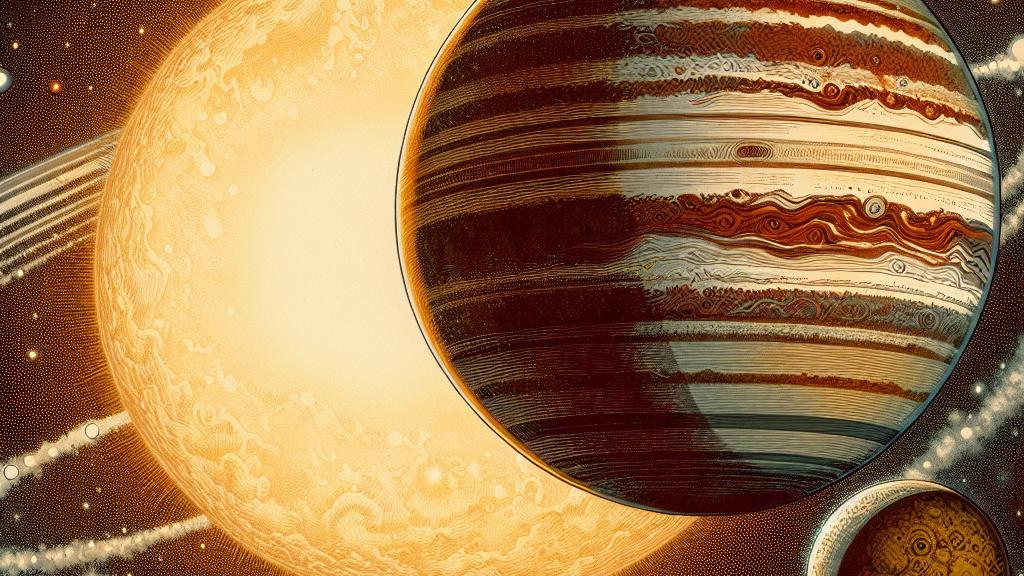Reclassification of HD 28185 c: A Massive Super-Jovian Planet
Overview
- The HD 28185 system reveals two important celestial bodies: HD 28185 b and c.
- New research unveils that HD 28185 c is actually a massive super-Jovian planet, not a brown dwarf as previously suggested.
- This significant finding reshapes our understanding of exoplanet classification and formation processes.

Exploring the HD 28185 System
Situated approximately 127.8 light-years from Earth, the HD 28185 system has become a captivating study subject for astronomers. Initially, the detection of a gas giant called HD 28185 b, revolving around a sun-like star estimated to be about 8.3 billion years old, piqued interest. Later, researchers identified a second object believed to be a brown dwarf, designated as HD 28185 c. However, a team from the University of Southern Queensland embarked on a thorough investigation, analyzing 22 years' worth of meticulous data. Their groundbreaking conclusions revealed that HD 28185 c is not merely a brown dwarf but rather a massive super-Jovian planet—an exhilarating twist in the narrative of planetary science.
Revised Characteristics of HD 28185 c
The research team's extensive work led to a more refined understanding of HD 28185 c's true nature. Recent calculations indicate that this exoplanet has an estimated minimum mass of around 6.0 Jupiter masses, with an orbital period recalibrated to approximately 24.9 years. To illustrate, this planet orbits at a distance of about 8.5 AU from its host star, mirroring characteristics of Saturn in our own solar system. This contrast between its massive size and the distance from its star raises captivating questions regarding the formation and evolution of such extraordinary planets. Moreover, this discovery underscores an exciting trend in astronomy—an increasing capacity to identify long-period gas giants, challenging the previous notion of how planets are formed around stars.
Implications for Future Research
The reclassification of HD 28185 c significantly impacts our understanding of gas giant formation in solar systems similar to ours. It compels scientists to rethink existing theoretical models, suggesting that massive planets can indeed thrive at considerable distances from their stars, contrary to traditional expectations. Such revelations encourage a reevaluation of current planetary formation theories and invite further investigation into the complexities of celestial body formation. As astronomers unravel more such mysteries in the cosmos, our comprehension of exoplanetary systems continues to expand. Each groundbreaking discovery fuels our insatiable curiosity and illuminates the awe-inspiring intricacies of the universe, reminding us just how much there is left to explore among the stars.

Loading...